12 Best Lower Body Pulling Exercises (with Pictures!)
Whether you find your lower body lacking in power or if you want to build toned glutes, chances are your workout program needs a lower body pulling exercise or two.
Fortunately, it’s likely that you already have a few of the following exercises in your workout program. But if you don’t - continue reading for a comprehensive list of the most effective lower body pull movements available.
Some of the more popular options include: deadlifts, rack pulls, hack squats, and kettlebell swings.
What are Lower Body Pulling Exercises?
Before delving into which exercises are the best lower body pull exercises, we first have to ascertain what makes a movement a lower body "pull" in the first place.
Lower body pulling exercises are loosely characterized by an upward production of force through the muscles of the legs, by recruitment of the posterior chain’s musculature or by featuring knee and hip extension as the movement’s primary biomechanics.
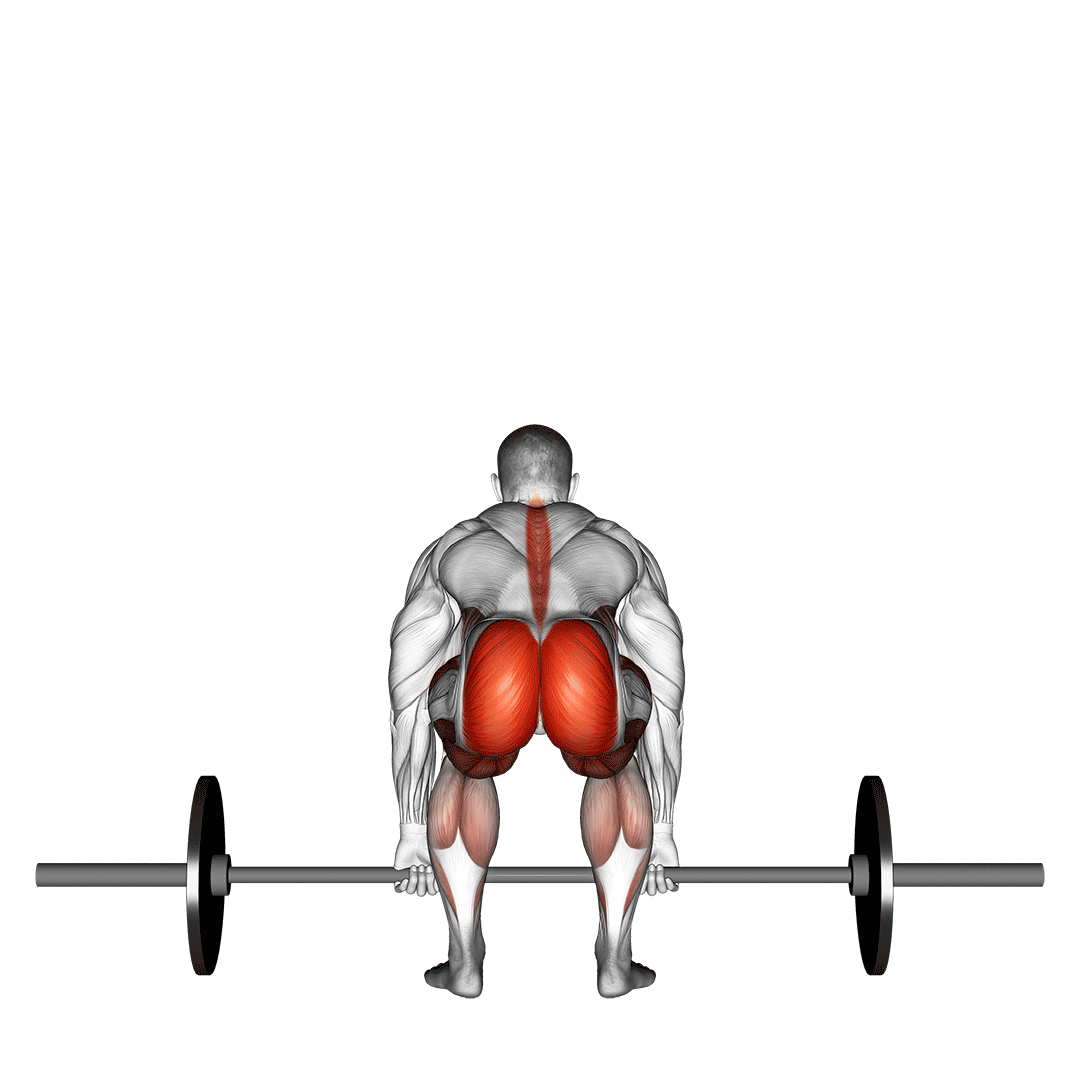
Of course, there are indeed certain exercises that won’t fit into all three categories, but are nonetheless still considered lower body pulling exercises for the purposes of workout programming.
Muscles Worked by Lower Body Pulling Exercises
Lower body pulling exercises will generally target the gluteal muscles, hamstrings, erector spinae and other muscles found in the lower back.
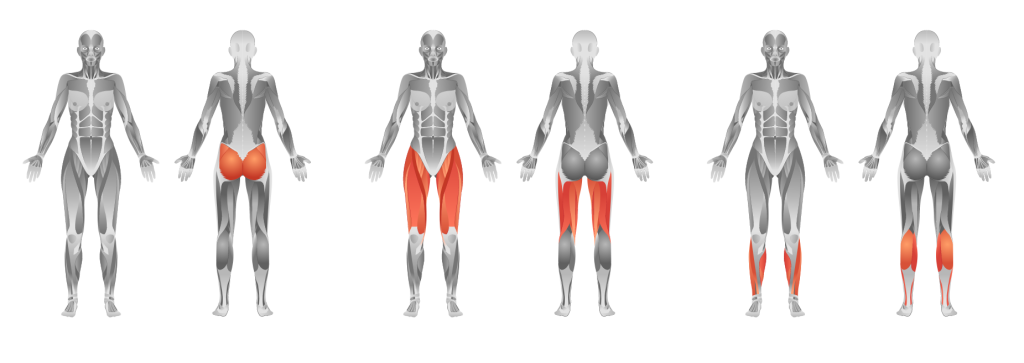
What are the Benefits of Doing Lower Body Pull Exercises?
Apart from building significant muscle mass in your lower body, pull exercises also offer the following benefits.
Strengthens the Posterior Chain
Lower body pull exercises generally target the muscles of the posterior chain, and are the primary method of developing both strength and mass in the glutes, hamstrings and lower back.
Reinforces Mechanics Relating to the Hips, Lower Back and Knees
Because lower body pulling movements often feature extension of the hips, knees or lower back, one primary benefit of doing them is the subsequent reinforcement of mechanics related to the joints of the lower body.
This comes in both the form of greater flexibility of connective tissues - as well as greater stability as a result of stronger skeletal musculature in relation to said biomechanics.
Improves Posture, Helps Lower Back Pain and Develops Lower Body Stability
Loosely related to the improvement of lower body mechanics; regularly participating in lower body pulling workouts will help alleviate back pain (in certain cases), improve whole-body posture and create a more stable base for the body as a whole.
Lower Body Pull Exercises
1. Conventional Deadlifts
The conventional deadlift is perhaps the most classic example of a lower body pulling exercise, as it quite literally involves pulling a barbell from the floor with the muscles of the posterior chain.
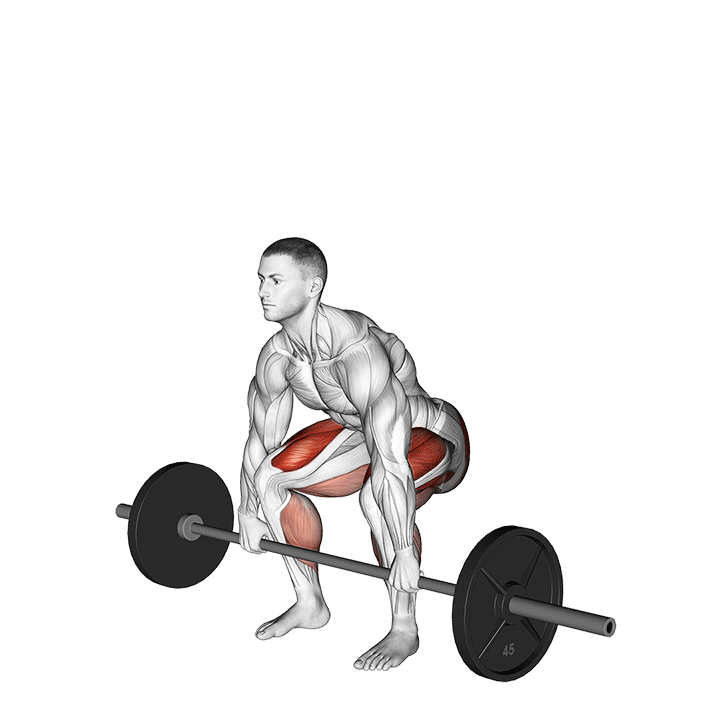
The deadlift is a multi-joint free weight exercise of significant intensity, and is most often performed for low-volume and high-load sets so as to build full-body explosiveness and power.
Equipment Needed
Conventional deadlifts require only a barbell and set of weight plates. Lifters at a particularly advanced level may wish to also use wrist straps and lifting belts for further support.
Muscles Worked
Conventional deadlifts target the glutes, hamstrings, quadriceps and erector spinae.
How to:
Standing with the legs approximately hip-width apart and a loaded barbell placed before the ankles, the lifter will contract the core and maintain a neutral spinal curvature as they bend at the hips and knees, gripping the barbell in both hands.
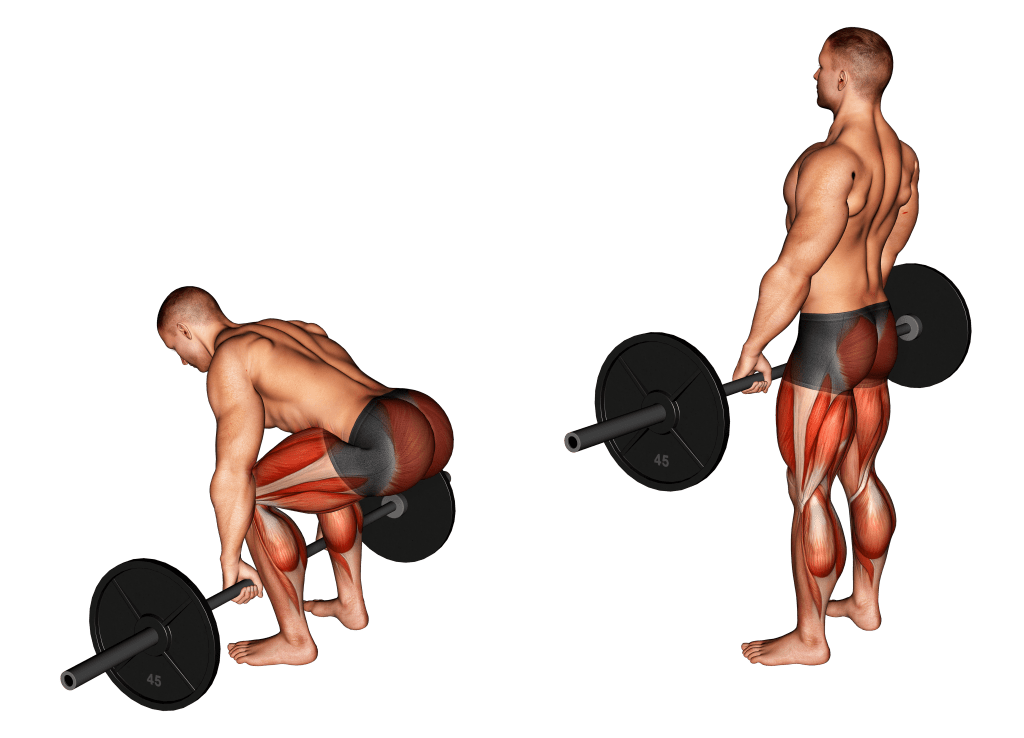
Then, the lifter will push through their heels and extend their body as they pull the barbell from the floor.
The repetition is complete once the lifter is standing upright with the bar held at around pelvis height.
2. Sumo Deadlifts
Sumo deadlifts are a variation of the conventional deadlift where the hands are set within the space between the legs, allowing for a shorter range of motion and wider stance to be adopted.
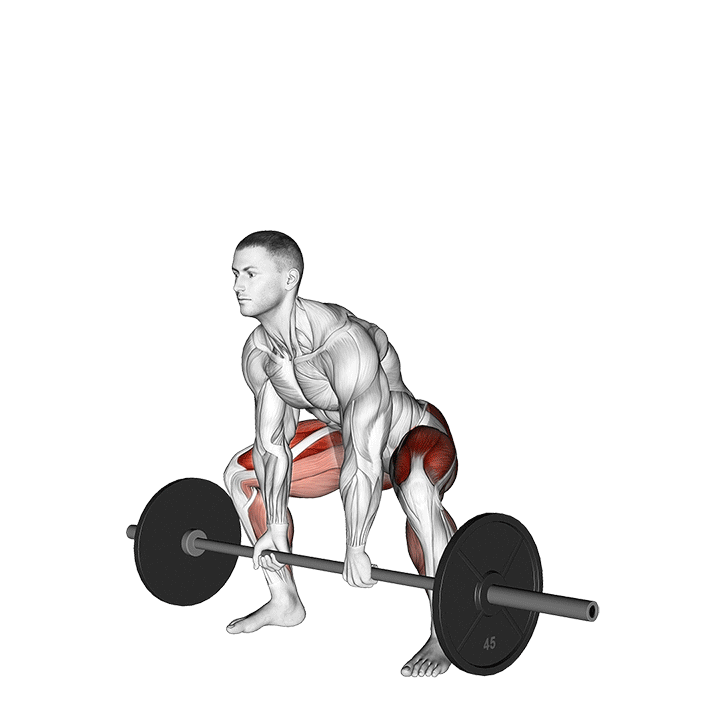
Like regular deadlifts, sumo deadlifts are also a compound movement performed for low volume and with a significant amount of weight.
This is done so as to develop greater lower body strength and power.
Sumo deadlifts and conventional deadlifts are often compared due to the similarity in their benefits and mechanics, but the differences largely come down to limb proportions and individual preference. Individuals with comparatively long legs may prefer the sumo deadlift over its conventional counterpart.
Equipment Needed
Sumo deadlifts require only a barbell and a set of weight plates. At heavier loads, using wrist straps or lifting belts may help protect the lifter from injury.
Muscles Worked
Sumo deadlifts primarily target the glutes and quadriceps, but also work the erector spinae and hamstrings to a lesser extent as well.
How to:
Setting the feet wider than shoulder-width apart, the lifter will bend at the hips and knees while maintaining a neutral spine.
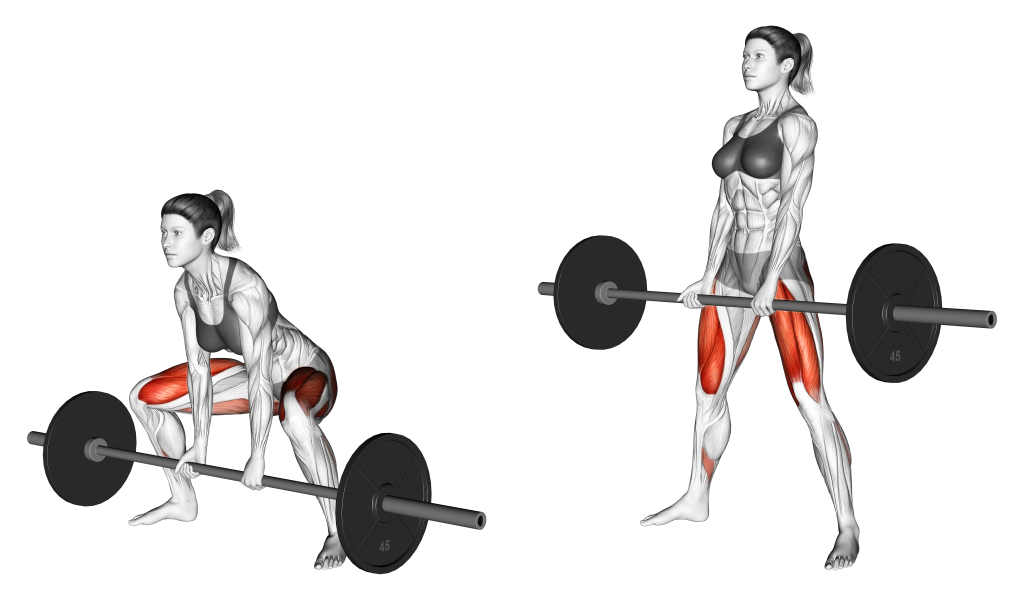
Gripping the barbell with the arms between the legs, they will drive through their heels and extend the hips and knees, returning to an upright position as they pull the barbell upwards.
The repetition is considered complete once the torso is relatively upright.
3. Rack Pulls
Although not solely a lower body exercise, rack pulls share enough similarities to be classified as a pulling exercise. They involve many of the same joints and muscle groups as other exercises of the same category, and as such may be considered one as well.
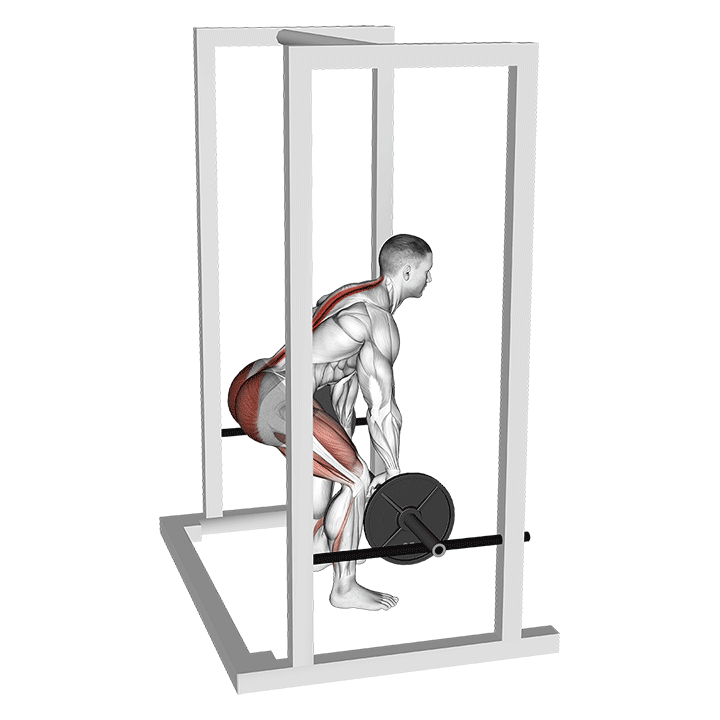
Rack pulls are a multi-joint body-wide pulling exercise most often performed for low-volume sets and high amounts of weight. They are used as a supplementary compound exercise alongside movements like the back squat or deadlift, and are noted for being one of the heaviest exercises a lifter can perform.
Equipment Needed
Rack pulls require a barbell rack, a set of weight plates and a barbell.
Muscles Worked
Rack pulls target the trapezius, latissimus dorsi, erector spinae, glutes, hamstrings and quadriceps.
How to:
To perform rack pulls, the lifter will set the barbell at approximately mid-thigh, bending at the hips and knees as they grip the bar.
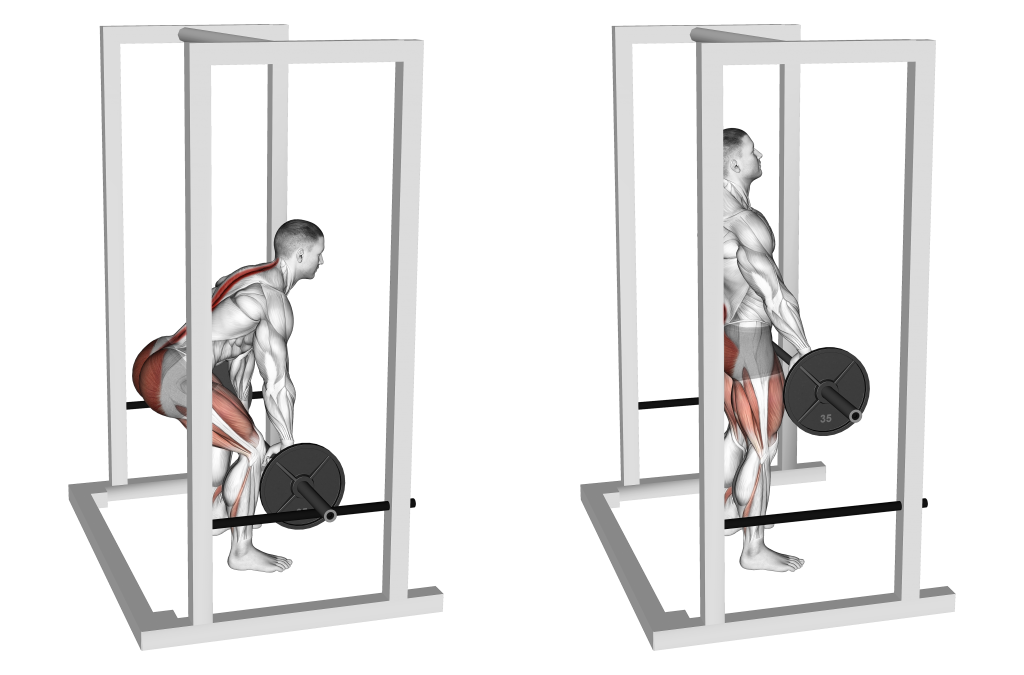
Contracting the core and ensuring the spine is in a neutral position, the lifter will then forcefully pull the bar upwards as they straighten their hips and knees.
Once the body is rigid and upright, the repetition is considered to be complete.
4. Barbell Hack Squats
The barbell hack squat is a lower body pull exercise performed for the purposes of strengthening the posterior chain - or by individuals who cannot perform conventional squats due to certain types of injuries.
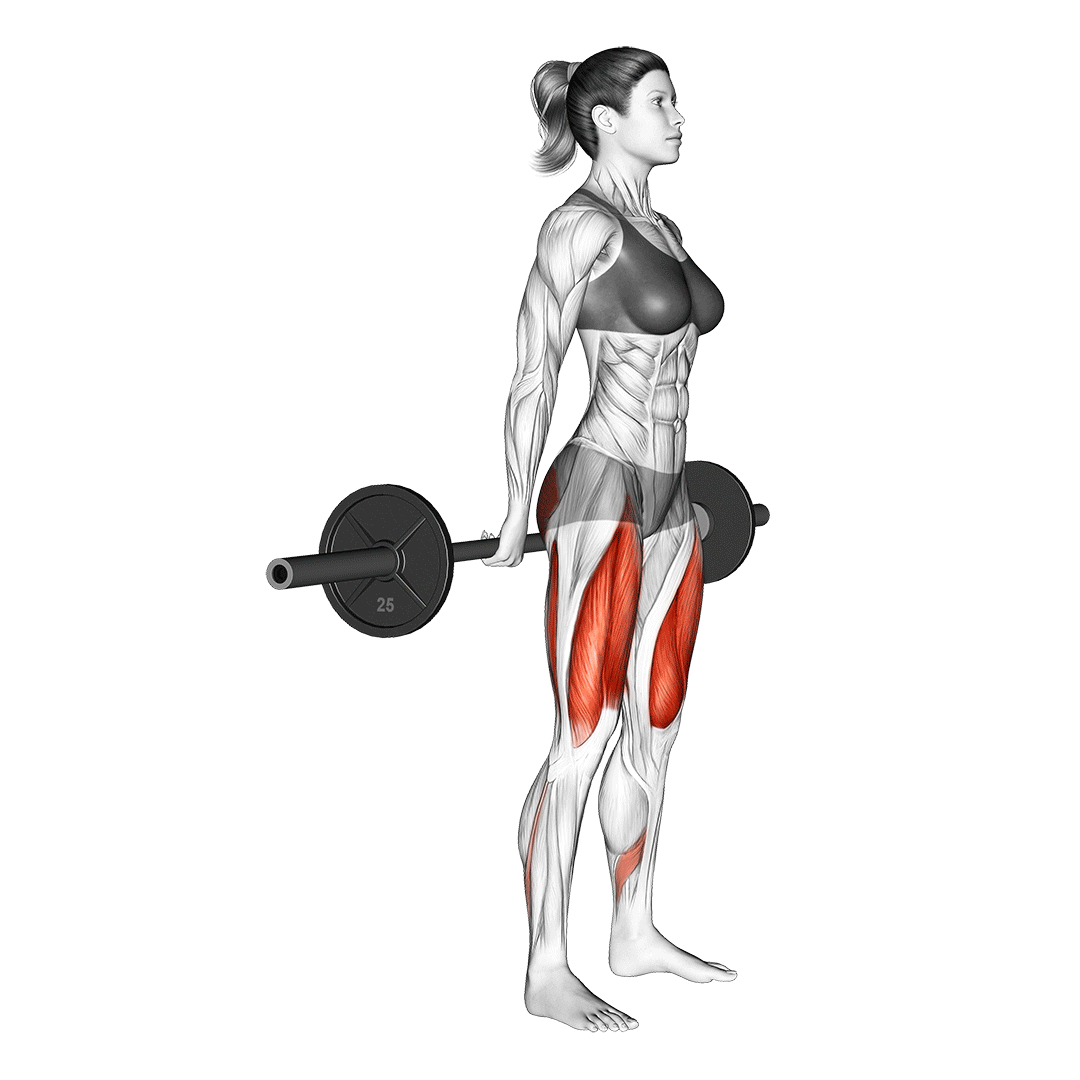
Like other squat variations, the barbell hack squat is a multi-joint compound movement involving significant dynamic movement of the knees and hips. It often plays the role as a secondary compound exercise within a lower body workout session, and will usually be loaded with a moderate amount of weight.
Equipment Needed
Barbell hack squats require only a barbell and a set of weight plates.
Muscles Worked
Barbell hack squats work the glutes, hamstrings and quadriceps to a moderate level of intensity.
How to:
Placing a loaded barbell behind their ankles, the lifter will bend at the hips and knees as they grip the barbell beneath their pelvis.
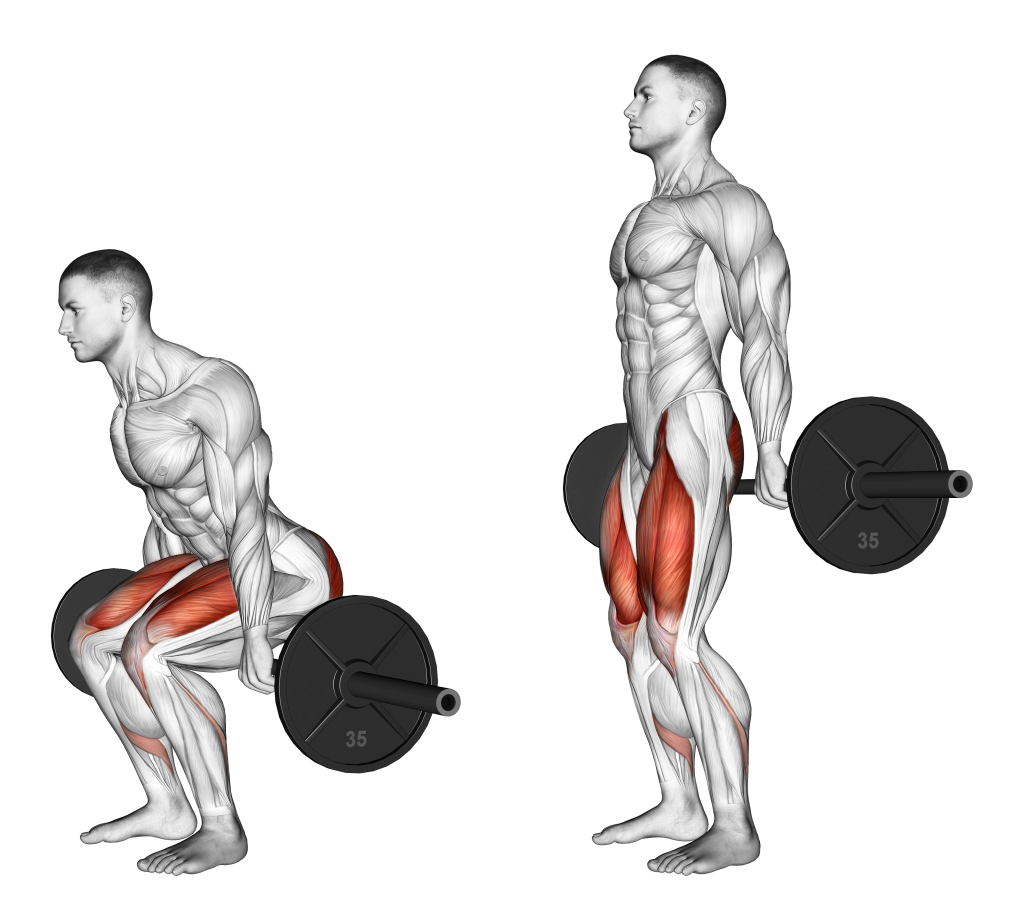
From this squatting position, the lifter will contract their core and drive through their heels as they extend their entire body. The repetition is considered complete once they are standing upright with the barbell held behind them.
5. Kettlebell Swings
Kettlebell swings are a highly explosive exercise used by athletes and weightlifters to build lower body power and strength in a single fluid motion. They are classified as a free weight compound movement, and are often performed with only a moderate level of resistance so as to avoid injury.
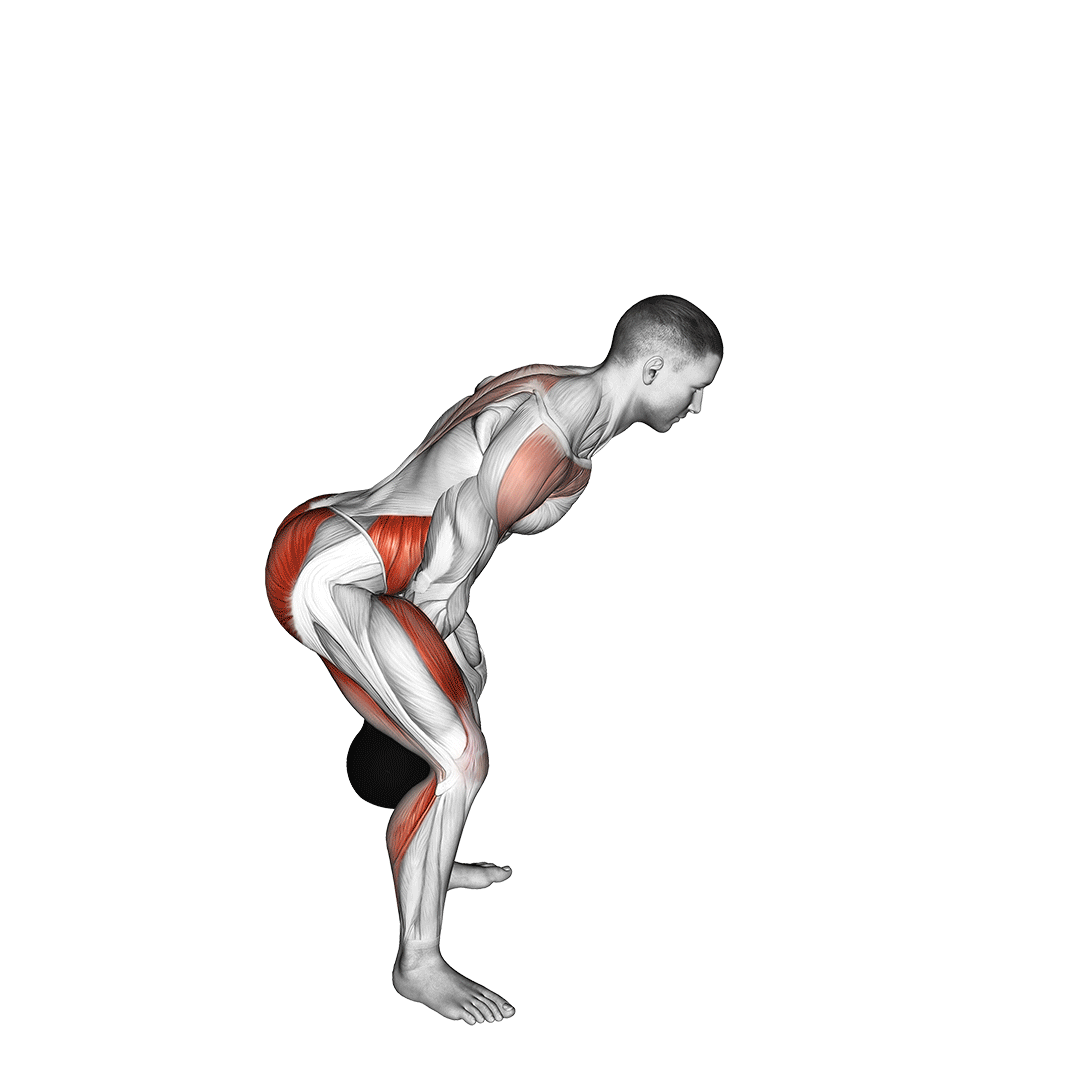
Equipment Needed
Kettlebell swings only need a kettlebell to perform.
Muscles Worked
Kettlebell swings work the glutes, hamstrings, quadriceps, erector spinae, deltoids, serratus and trapezius muscles.
How to:
Standing upright with a kettlebell held in both hands, the lifter will lever at the hips as they lower the kettlebell between their legs.
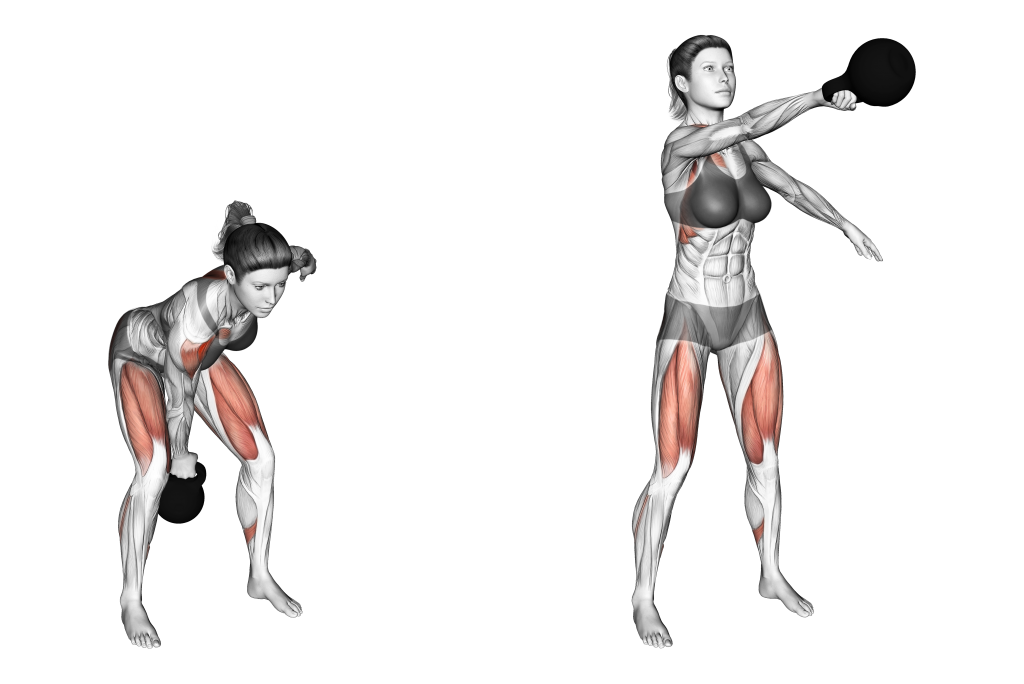
Once the torso is sufficiently angled, they will then explosively push forwards and the hips and upper body as they swing the kettlebell upwards.
When the arms (and kettlebell) are parallel with the chest, the repetition is considered to be complete.
6. Stiff-Legged Deadlifts
Straight or stiff legged deadlifts are a variation of the conventional deadlift where as minimal knee flexion occurs as possible. This is done so as to maximize recruitment of the glutes, erector spinae and hamstring muscles.
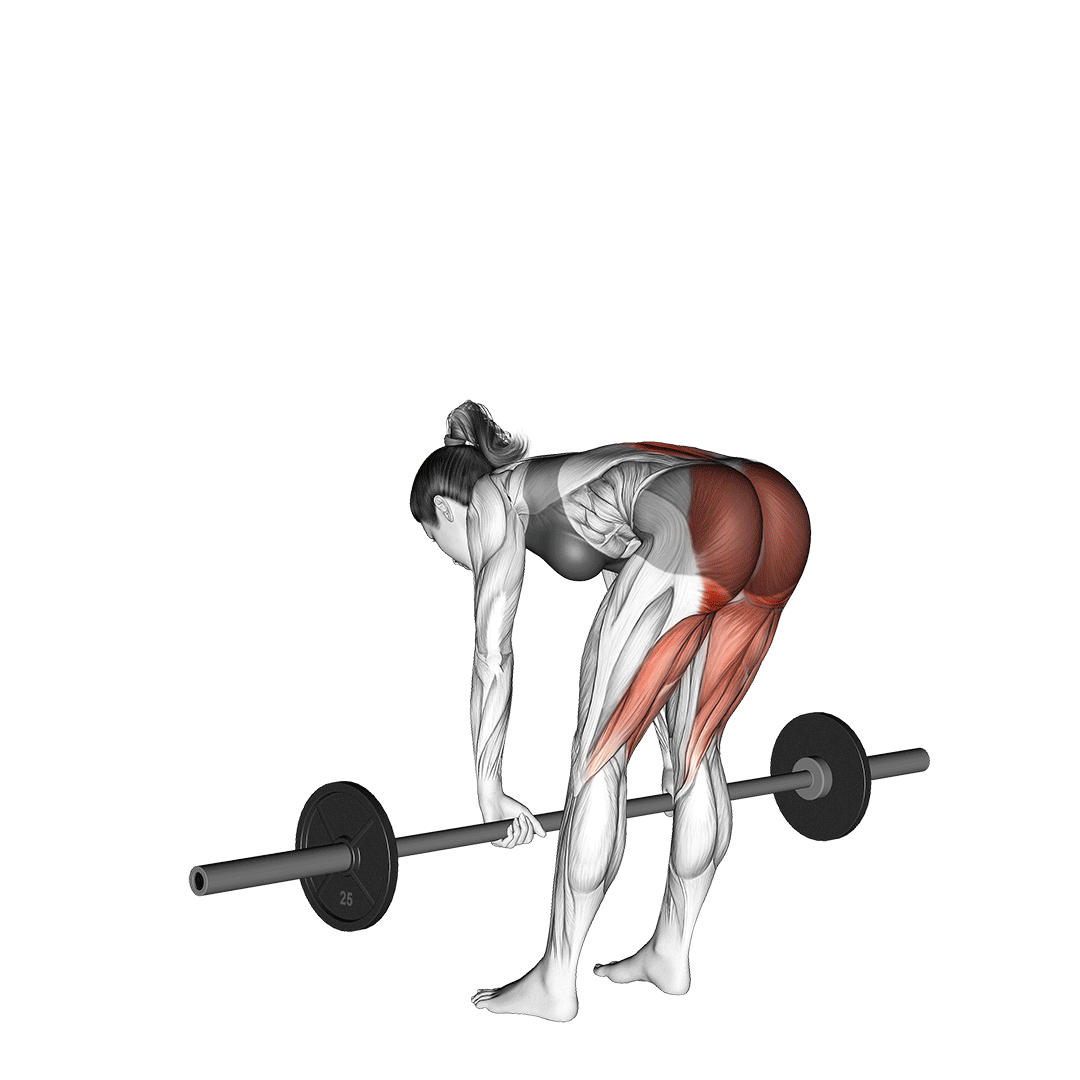
Lifters will find that the stiff-legged deadlift requires considerably more glute and lower back flexibility than other deadlift variations, and that they be unable to lift as much weight as well.
TIt is for this reason that the straight leg deadlift is usually programmed as an accessory exercise, rather than as the primary source of training stimulus within the workout.
Equipment Needed
Straight leg deadlifts require only a barbell and set of weight plates.
Muscles Worked
Stiff-legged deadlifts target the glutes, erector spinae and hamstrings to significant extent.
How to:
Placing a loaded barbell on the floor, the lifter will lever at the hips and bend at the knees as little as possible before reaching for the barbell with both hands.
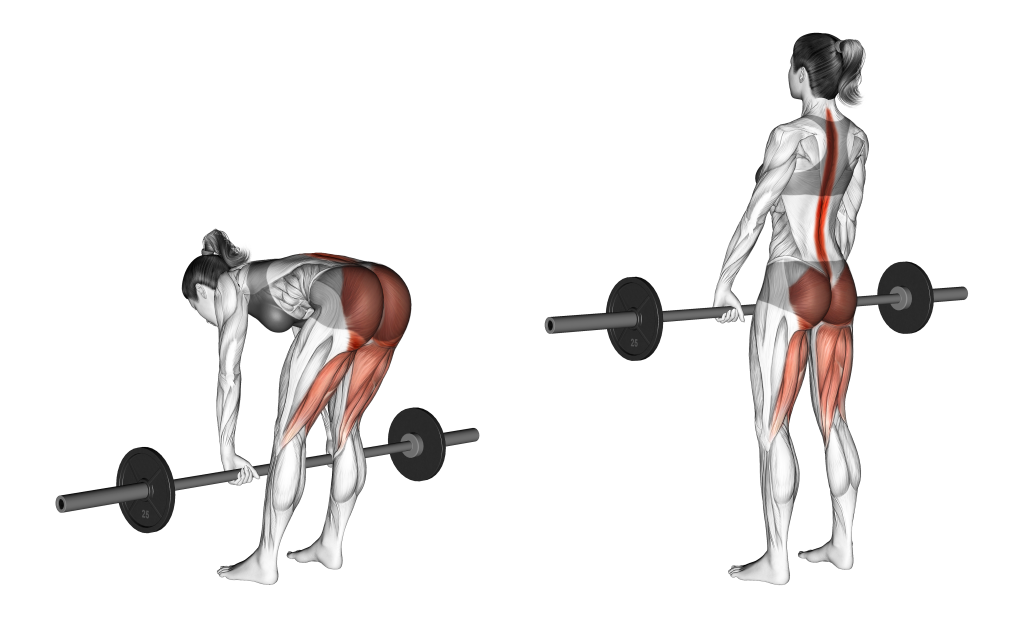
Once the barbell is securely grasped and the back is in a sufficiently secure position, the lifter will drive through their heels and push their hips forwards as they draw the barbell upwards.
Once the body is upright and the hips extended, the repetition is considered to be complete.
7. Romanian Deadlifts
The Romanian deadlift is yet another variation of the deadlift where the knees are bent as little as possible and much of the movement comes from hinging of the hips.
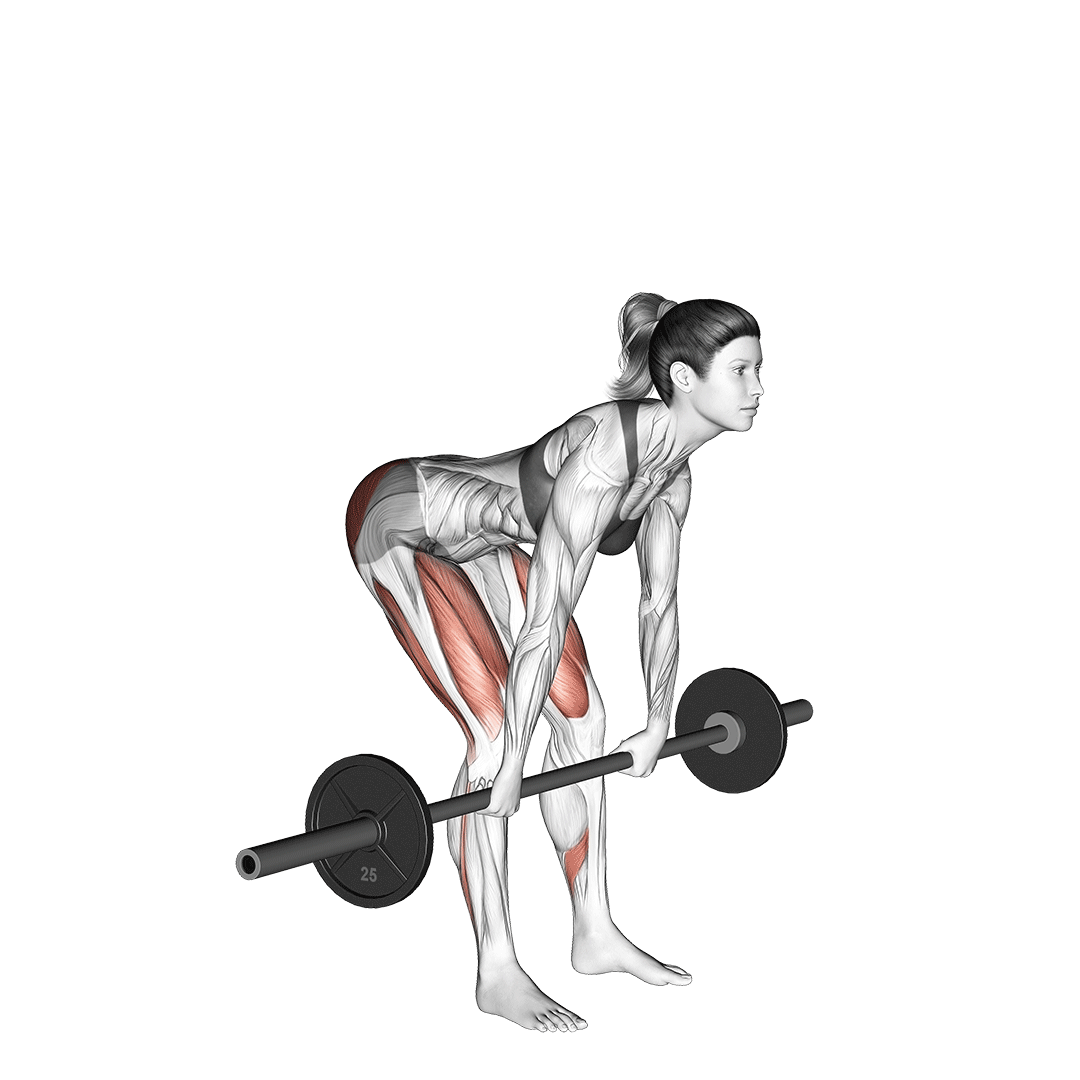
It is important not to confuse the Romanian deadlift with the stiff-legged deadlift, as the latter begins with the barbell on the floor. In comparison, the Romanian deadlift begins with the lifter already gripping the bar, and does not involve the lifter drawing it off the ground.
Otherwise, the Romanian deadlift is identical to its counterpart in the fact that it primarily targets the posterior chain muscles and is most often programmed as an accessory movement.
Equipment Needed
Only a barbell and set of weight plates are needed to do Romanian deadlifts.
Muscles Worked
Romanian deadlifts primarily target the glutes and hamstrings, but also recruit the erector spinae in addition.
How to:
Standing upright with a loaded barbell held at arm’s length and the feet hip-width apart, the lifter will contract their core and ensure their spine is in a secure position before pushing their hips backwards and allowing the torso to bend forwards; This is otherwise known as a hip hinge.
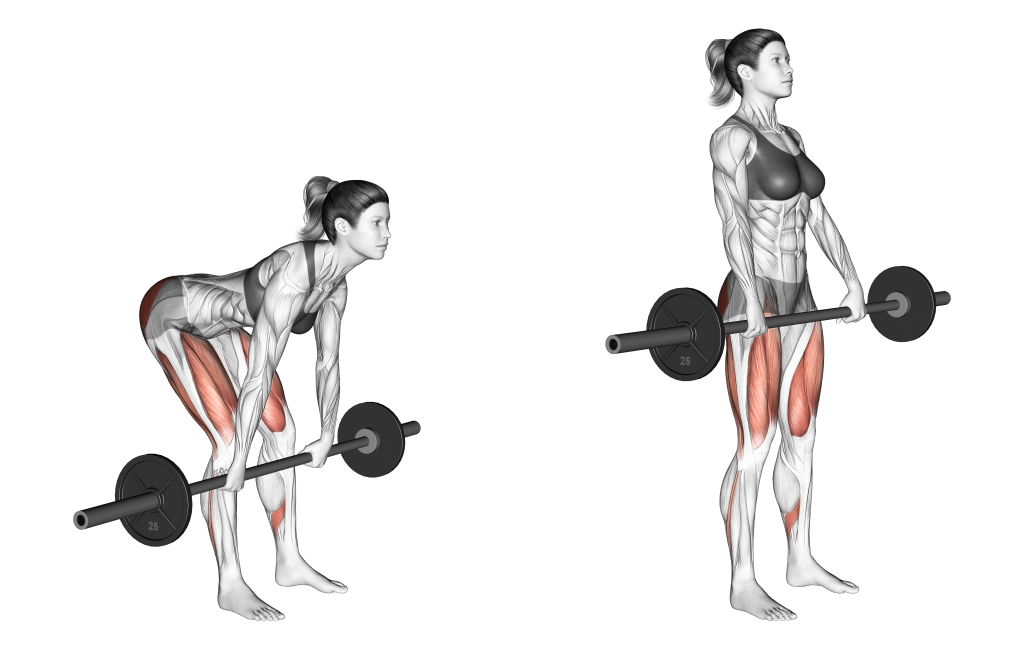
Once the torso is parallel with the floor, the lifter will squeeze their glutes and push their hips forwards - returning the lifter to their starting stance and thereby completing the repetition.
8. Good Mornings
Good mornings are a unique free weight pulling exercise where the lifter hinges at their hips as a loaded barbell rests atop their upper back.
This trains much the same muscle groups as other lower body pulling exercises, and is often used as supplementary work for reinforcing the posterior chain.
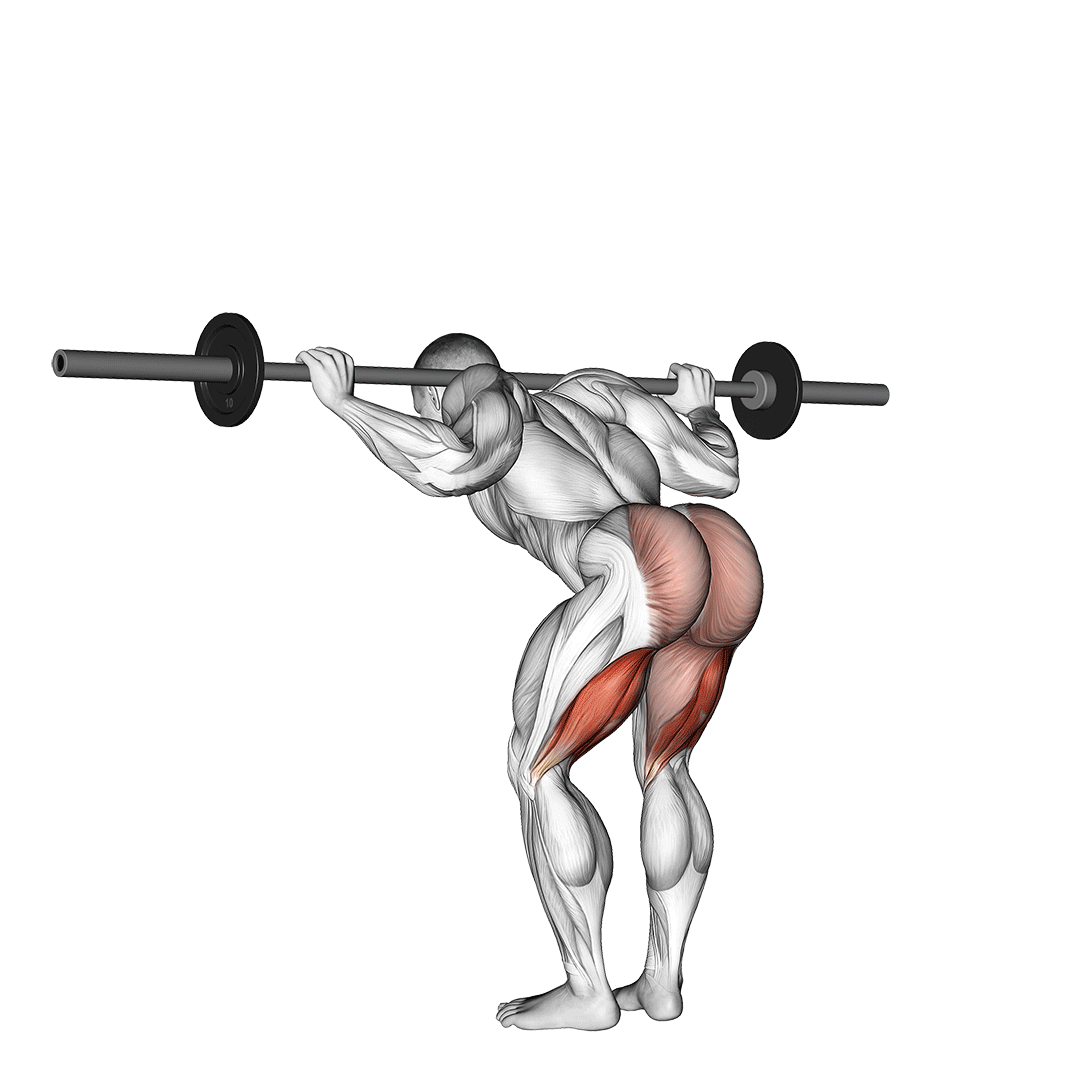
Equipment Needed
To do good mornings, you will need a barbell and set of weight plates.
Muscles Worked
Good mornings target the erector spinae, glutes and hamstrings.
How to:
Standing upright with a loaded barbell atop their back, the lifter will contract their core and ensure their back is at a neutral curvature before pushing their hips backwards and allowing the torso to lever forwards.
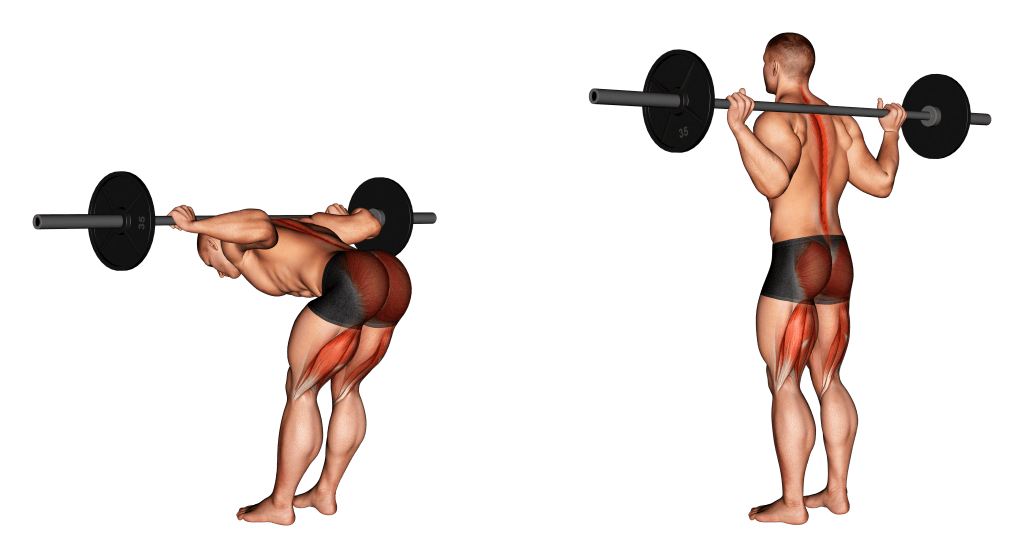
Once the torso is approximately parallel to the floor, the lifter will rise back to the starting position by pushing their hips forward.
At this point, the repetition is considered to be complete.
9. Glute Bridges
Glute bridges are a low-impact exercise performed with the lifter forming a “bridge” with their body while in a lying position. While it is traditionally performed with no equipment whatsoever, lifters may wish to further up the intensity by adding a loaded barbell or weight plate atop their pelvis.
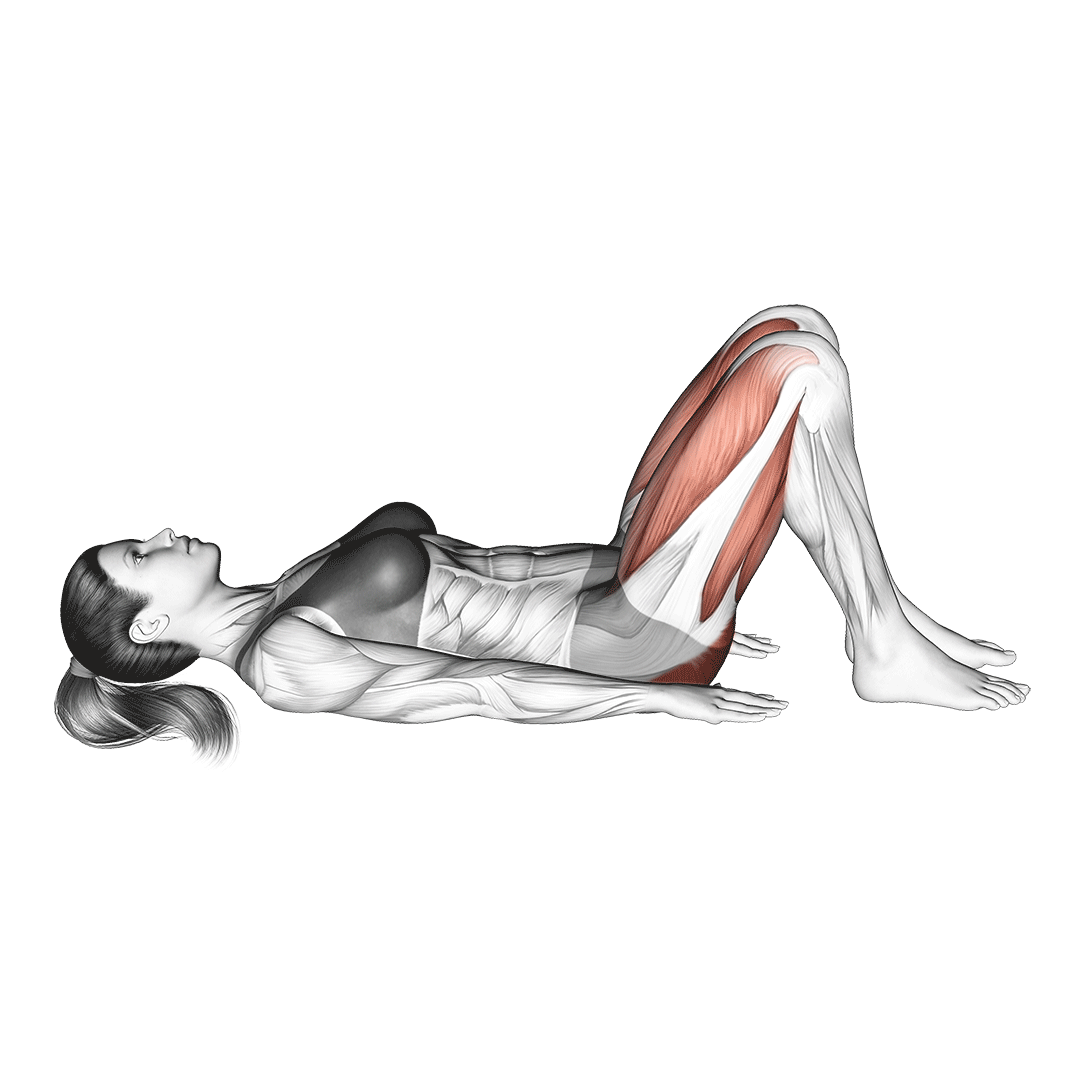
The glute bridge exercise is often included at the tail end of lower body workouts for its capacity to add further posterior chain training volume in a relatively simple movement pattern.
Equipment Needed
Traditionally, glute bridges require no equipment whatsoever. However, they may be made more intense by adding weight plates, barbells or any other weighted training equipment atop the hips.
Muscles Worked
Glute bridges target the hamstrings and gluteal muscles.
How to:
Lying on their back with the knees drawn up, the lifter will flex their core so as to ensure the body remains straight before also squeezing their glutes.

This should have the effect of pushing the pelvis upwards and forming a “bridge” with the body, with the legs, hips and torso aligning in a straight line.
10. Hip Thrusts
Hip thrusts are the more technically complex cousin of glute bridges, but otherwise share much the same characteristics of featuring hip extension and primarily being used to target the posterior chain musculature.
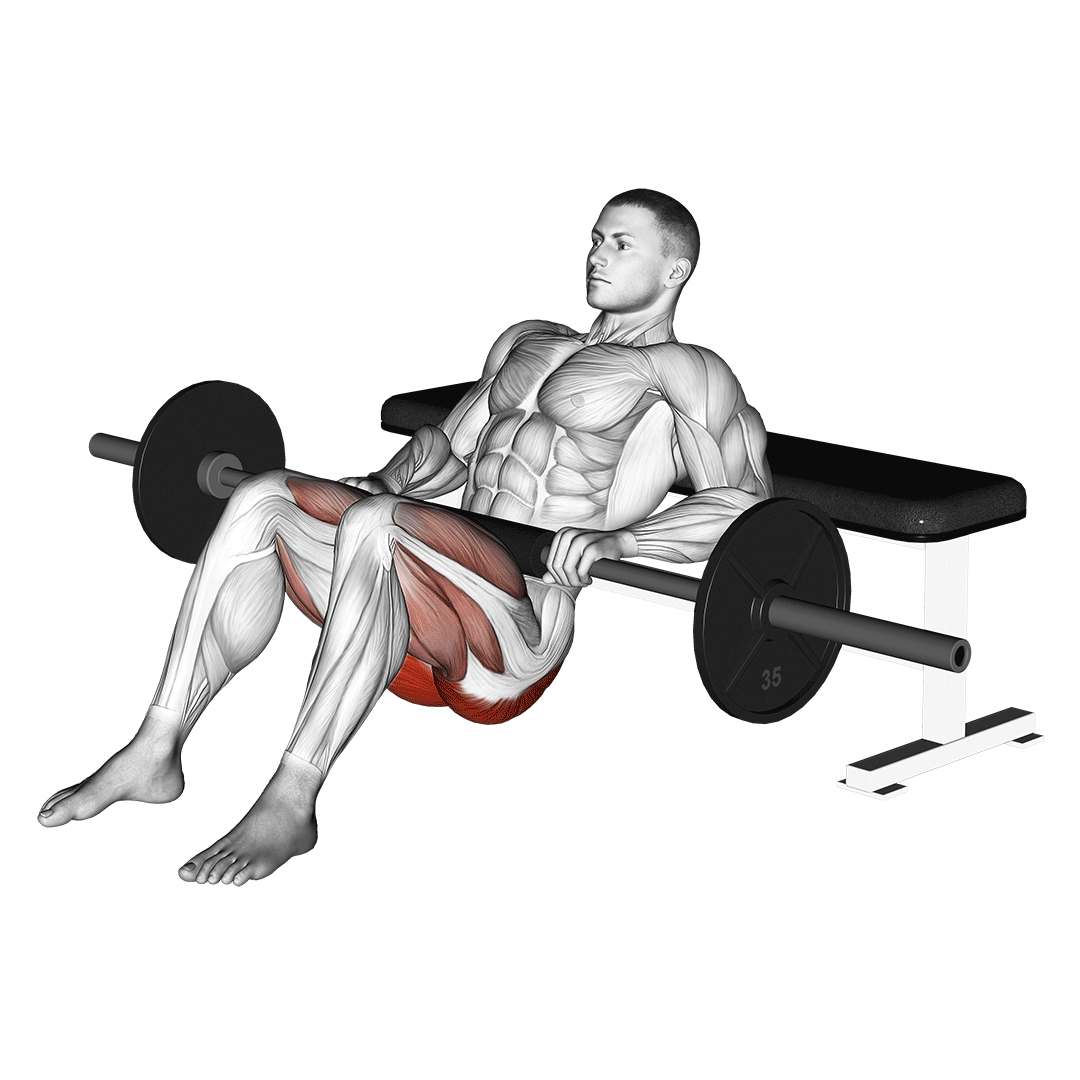
Unlike glute bridges, hip thrusts are traditionally performed with weight, and will often involve the torso being elevated higher than the feet, rather than having the lifter lying flat on their back.
Equipment Needed
Hip thrusts will require some sort of weighted equipment (dumbbells, plates, etc.) as well as an exercise bench.
Muscles Worked
Hip thrusts work the glutes, hamstrings and sections of the quadriceps femoris.
How to:
Placing their upper back atop an exercise bench with their legs bent before them and their hips beneath their torso, the lifter will place a loaded barbell (or dumbbell) atop their pelvis.
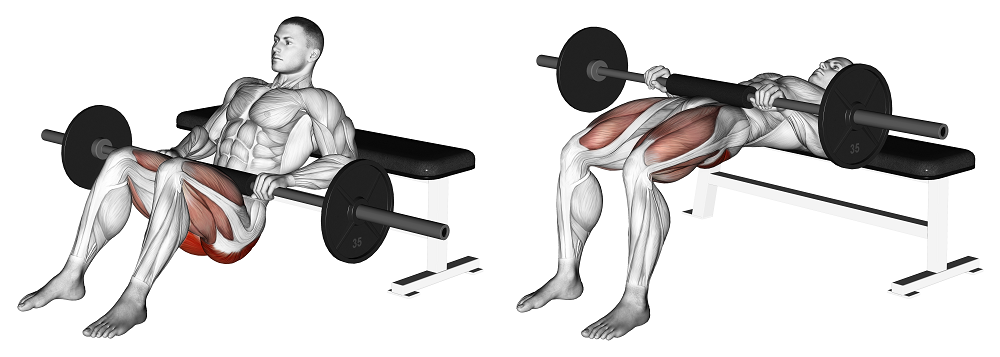
Once set up, the lifter will then squeeze their glutes and extend their hips forwards, stopping once they are parallel with the torso.
To complete the repetition, the lifter will simply reverse the motion and return to their original position.
11. Machine Hamstring Curls
Machine hamstring curls are a single-joint isolation exercise primarily performed with the use of a leg curl machine.
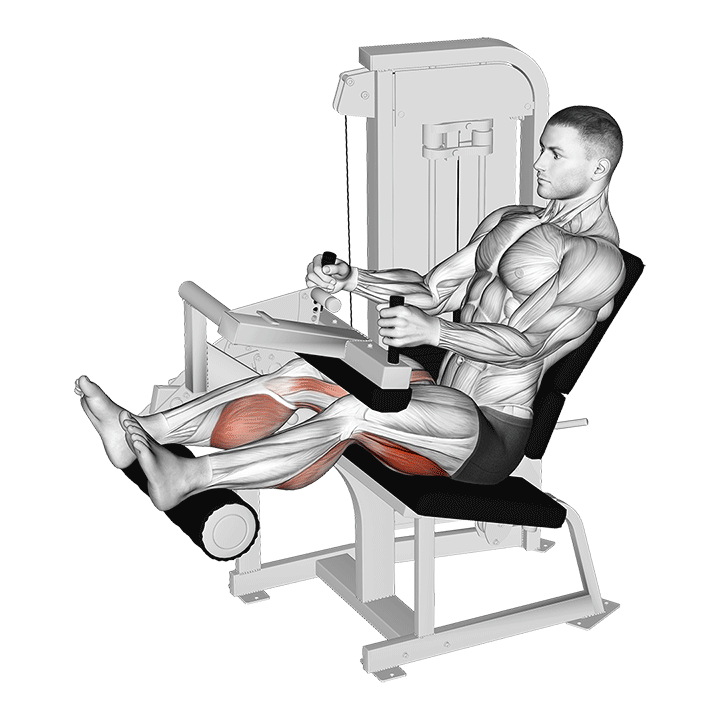
In most training programs, hamstring curls are used as an accessory exercise to help maximize development in the posterior chain, but can also be used as part of a warm-up drill at particularly low intensities.
Equipment Needed
Machine hamstring curls will require a lying or standing leg curl machine.
Muscles Worked
As an isolation exercise, hamstring curls primarily target the hamstrings. However, the glutes and calves may also be employed to a lesser extent, depending on the specifications of the machine being utilized.
How to:
Seating themselves within the machine and ensuring the pads are secure against the back of the ankles, the lifter will bend at the knees and draw their ankles towards their glutes in a slow and controlled manner.
Once the feet are at least parallel with the knees, the lifter will slowly reverse the motion and straighten their legs to complete the repetition.
12. Cable Pull Throughs
Cable pull throughs are a machine-based compound exercise performed so as to train the muscles of the posterior chain with low-to-moderate levels of resistance.
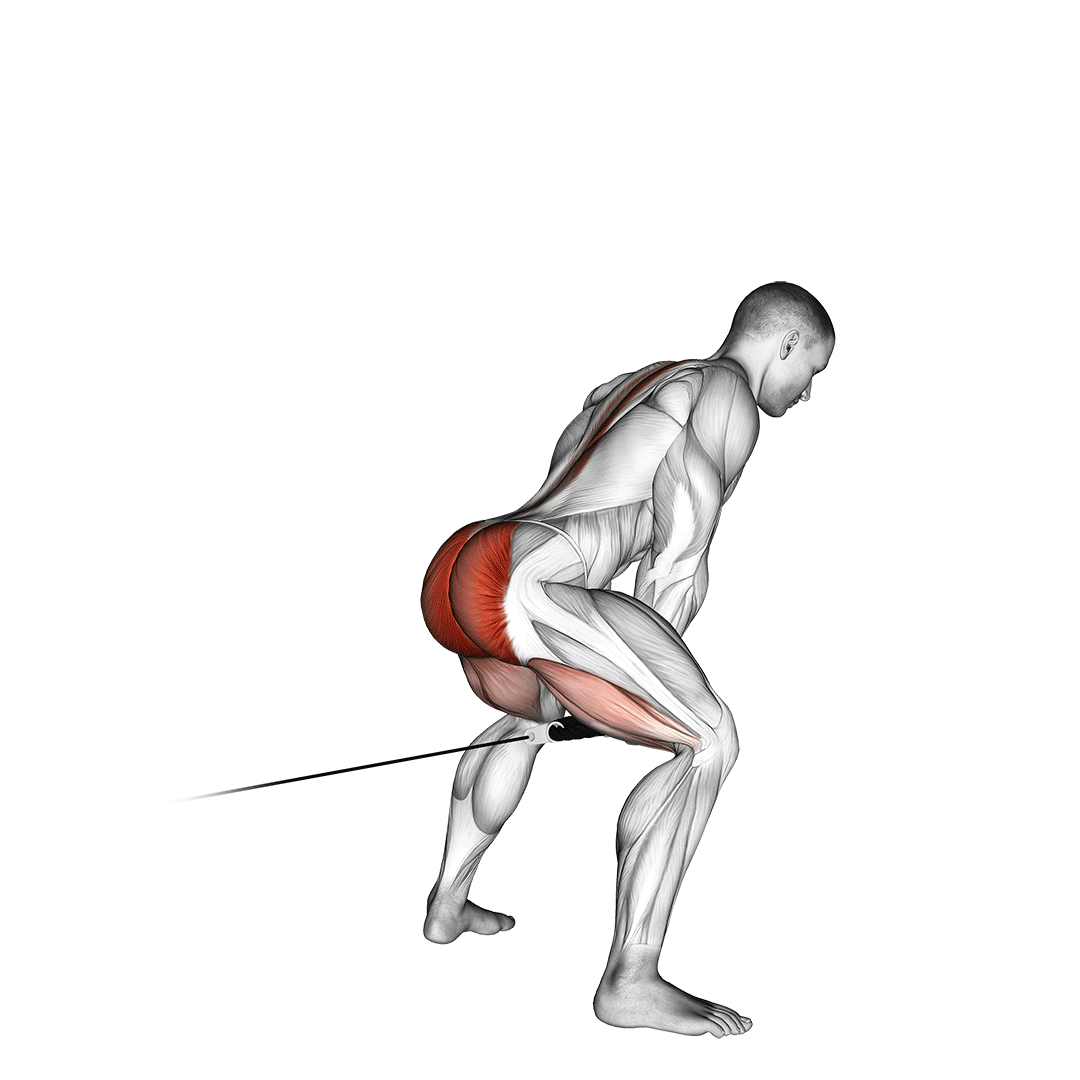
As the name implies - cable pull throughs involve the lifter pulling a cable handle through their legs in a manner mechanically similar to a hip thrust or glute bridge.
Equipment Needed
Cable pull throughs require a cable machine and a handle that allows for both hands to be used - such as a two handed rope attachment.
Muscles Worked
Cable pull throughs target the hamstrings, glutes and erector spinae.
How to:
Facing away from the cable pulley with enough distance to create tension in the cable, the lifter will bend at the hips and waist until the torso is approximately parallel with the floor. The hands should be between the legs and gripping the cable attachment as they do so.
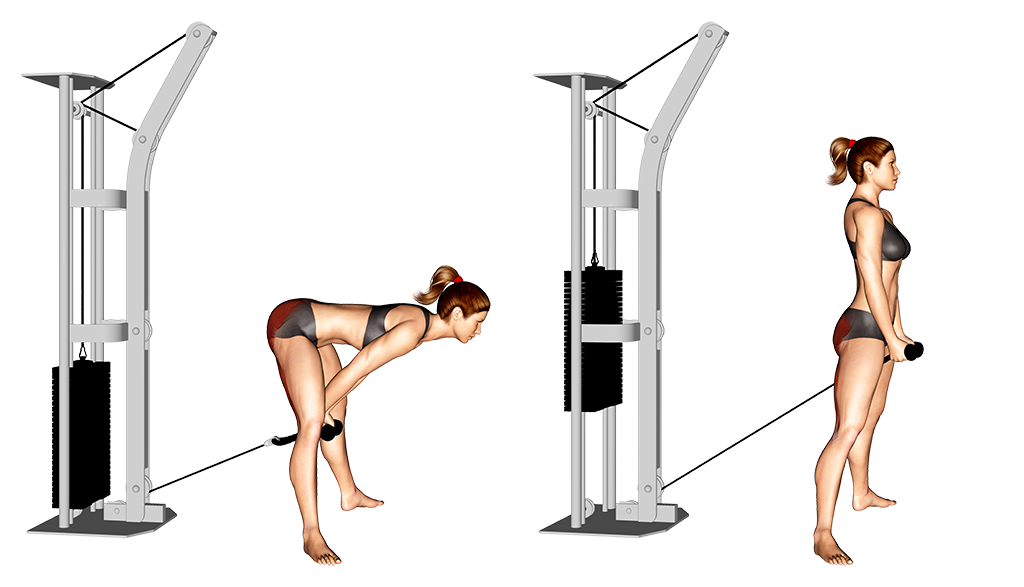
Once in the correct stance, the lifter will push through their hips and stand upright, drawing the handle along with them as they do so.
Now in a standing position with the handle held near the front of the pelvis, the lifter will simply return to their original stance in order to complete the repetition.
In Conclusion
Although we’ve listed some of the most common and most effective lower body pull exercises here, remember that there are plenty more that may better fit your needs. If you can’t quite find what you’re looking for in this article, try experimenting with a few variations or alternatives.
So long as attention is paid to form and proper programming, the inclusion of these exercises into your training program will be undoubtedly beneficial.
If you don’t have a training program yet - we suggest trying out Push Pull Legs, which features similar pull exercises in many of its workouts.
References
1 Murphy, Myatt. Men's Health Push, Pull, Swing: The Fat-Torching, Muscle-Building Dumbbell, Kettlebell & Sandbag Program. United States: Rodale, 2014.
2 Greenfield, Ben. Beyond Training, 2nd Edition: Mastering Endurance, Health & Life. United States: Victory Belt Publishing, 2014.
